Brussels
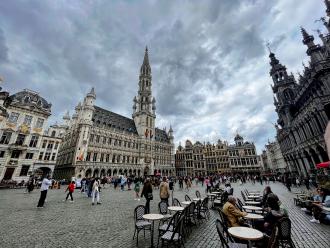
Table of Contents
The administrative centre of the European Union.
Driving to Brussels
The drive from Paris to Brussels took approximately three hours. The scenery along the route was pleasant, with numerous farms and open fields passing by. I found it intriguing that European driving culture always reserves the leftmost lane for overtaking. Almost all drivers strictly adhere to this rule, switching back to the second left lane even if they need to overtake another vehicle ahead within the next few seconds. Consequently, I observed more lane changes here compared to the US. I’m uncertain if this practice increases safety, but I didn’t witness any accidents and noticed that people strictly adhered to the speed limit.
One anecdote from the journey involved our car’s AdBlue warning light illuminating, something I was unfamiliar with. I stopped at a highway gas station and asked other drivers and staff about it. They were incredibly helpful, explaining that AdBlue is an environmentally friendly chemical used by the car to reduce CO2 emissions. Thankfully, we were able to resolve the issue and continue our journey.
Royal Gallery of Saint Hubert
This is a classic tourist shopping center, uniquely featuring a glass ceiling that covers the entire street. I saw numerous Belgian chocolate shops lining the sides, which looked genuinely tempting but expensive. The streets, both inside and out, were vibrant with live music and various busking performances.
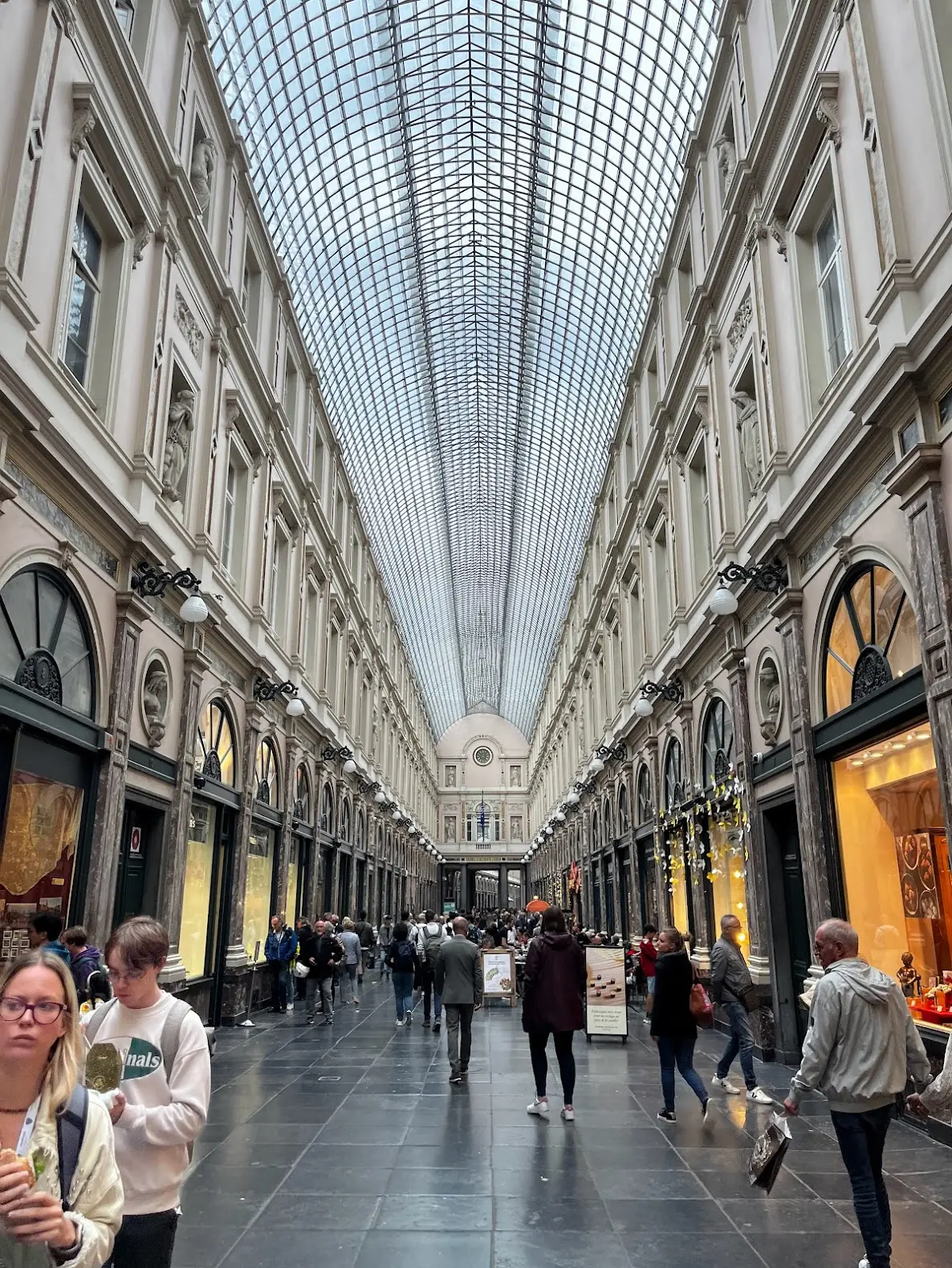
St Michael and St Gudula Cathedral
We visited another cathedral after seeing a few in Paris, but I never grew tired of them because each one is distinctive and represents a different history and story. I don’t know if it’s ironic, but there is a small bar right in front of the entrance to the cathedral where people can relax on comfortable chairs. The inside, of course, is gorgeous with its collection of stained glass and a preserved ancient church site underground.

Grand Place
We then strolled to the Grand Place, a mere few minutes from the cathedral. This location radiates a unique historical aura, surrounded by numerous historical buildings that enhance the grandeur of the plaza.

Surprisingly, this was the location where Marx resided during the composition of his early works. It was steeped in irony and, as my friend pointed out, held powerful symbolism. Tourists were oblivious, sitting on the steps of the house, indulging in famous Belgian fries, completely unaware that Marx once lived here, despite the sign on the door. It seems that Marxism is not as prevalent as it once was.
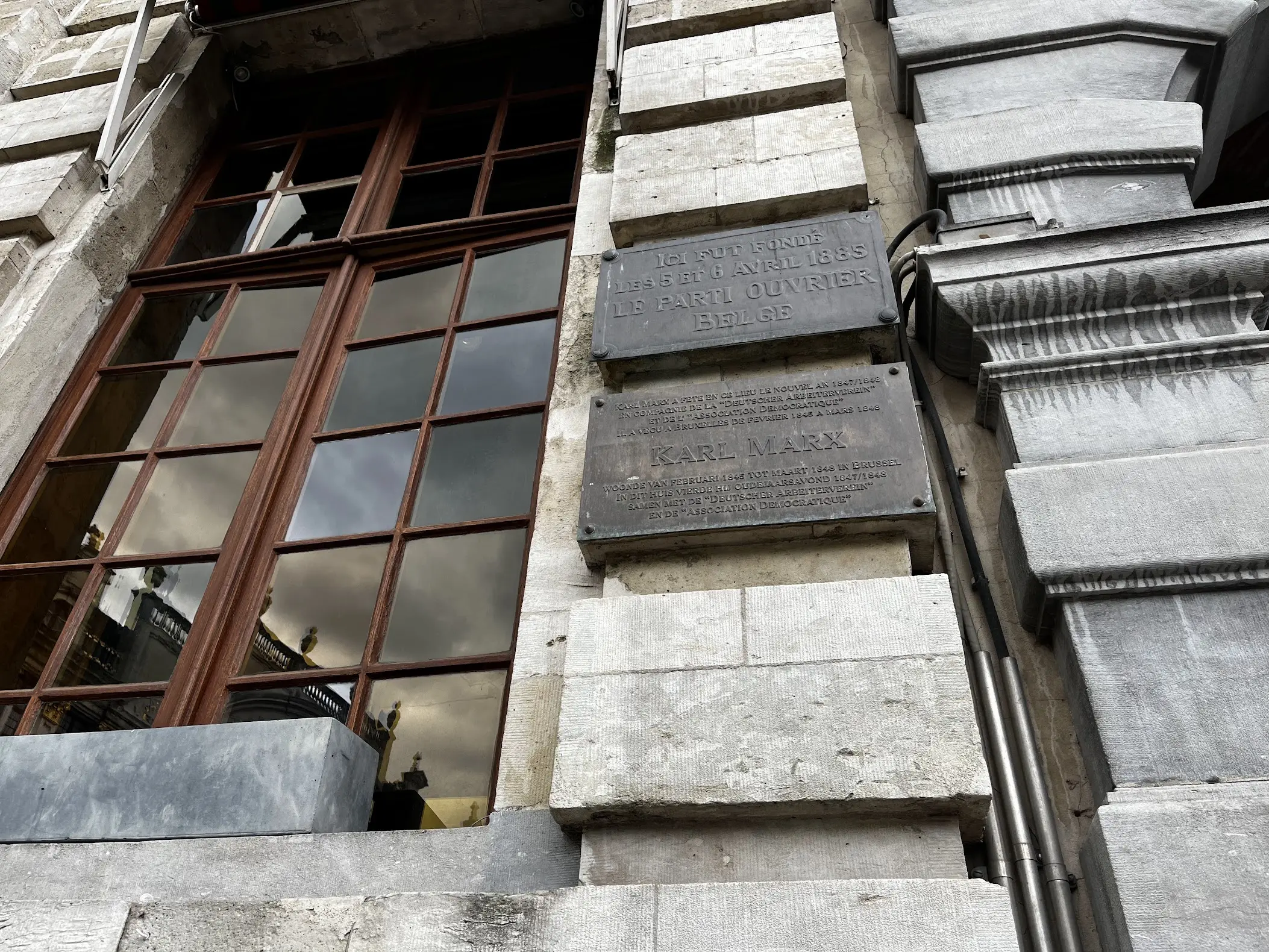
Manneken Pis
This is the famous “boy peeing” from WWII that I remember learning about in elementary school. It was quite surprising, and not at all what I expected, which was a bit disappointing. The sculpture wasn’t even in a full spring pool, but rather, halfway. The Manneken Pis itself was so small that it was almost impossible to see any details. However, the path leading to this little statue was vibrant, lined with numerous chocolate, waffle, and fries shops.
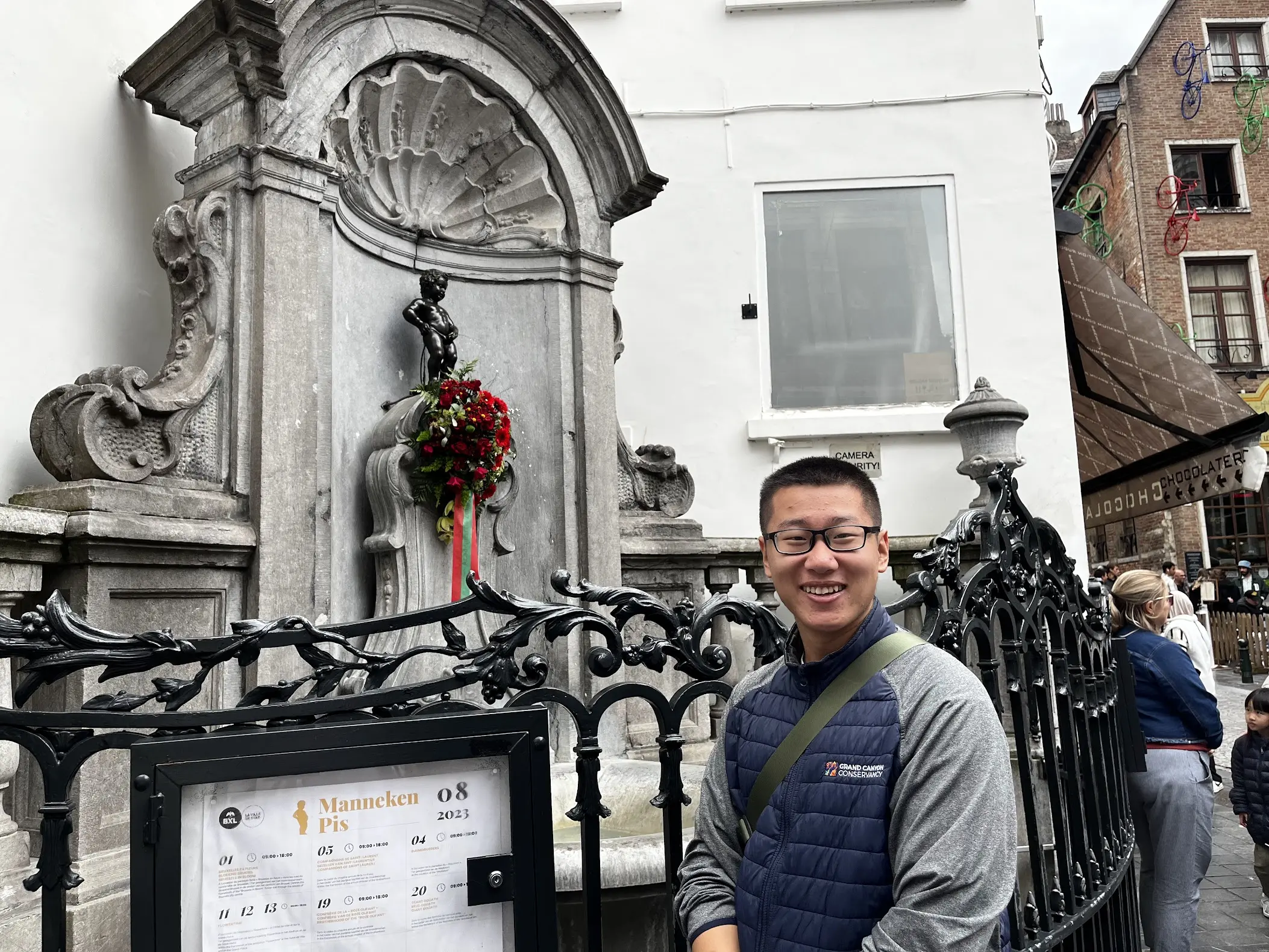
Royal Palace of Brussels
This is another location that completely took me by surprise. Despite its name, the Royal Palace, the royal family of Brussels doesn’t reside here; they merely work in this place. The road leading to the palace is in a terrible state, filled with uneven surfaces and scattered rocks. It’s such a challenge for both cars and scooters that we all unfortunately experienced. The palace was under construction during our visit, and honestly, there wasn’t much to see since we couldn’t gain entry.
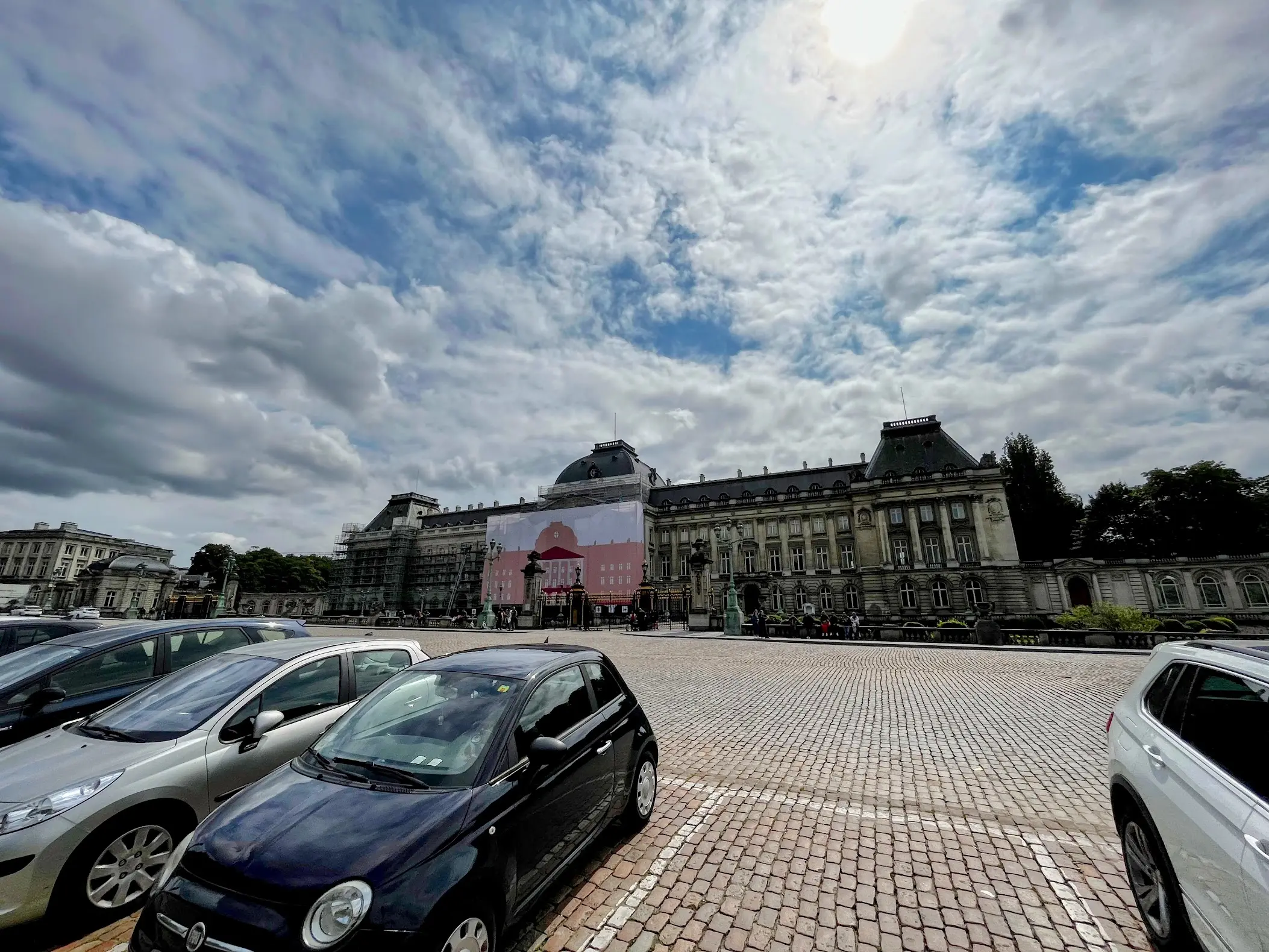
Parlamentarium
Surprisingly, this became my favorite place visited in Brussels. I was aware that Brussels was the “capital” of the EU but never truly understood the intricate workings of the EU. This museum, dedicated to the history of the EU, is free of charge and offers interactive touchscreen and audio guides. These guides can be attached to specific spots and listened to in your selected language, a brilliant design considering the EU has around 20 official languages, not including Chinese, of course.
The museum is filled with exhibits and there is a security check upon entry. The storytelling within the museum is remarkable, using many creative methods to portray the narrative of peace. It was so engaging that I couldn’t help but think of it as a very successful political “propaganda”. Even the restroom paper towels were reusable woven cloth, a sight unseen elsewhere in Europe. I suppose this was a way to demonstrate the EU’s advanced environmental friendliness. Admittedly, the EU itself is a brilliant design that has united many nations for better survival in the current political climate.

Brussels is indeed an exceptional city, yet it cannot be compared to Paris. I particularly admire the EU Parlamentarium, which provides me with detailed insights into the progression of the European Union.